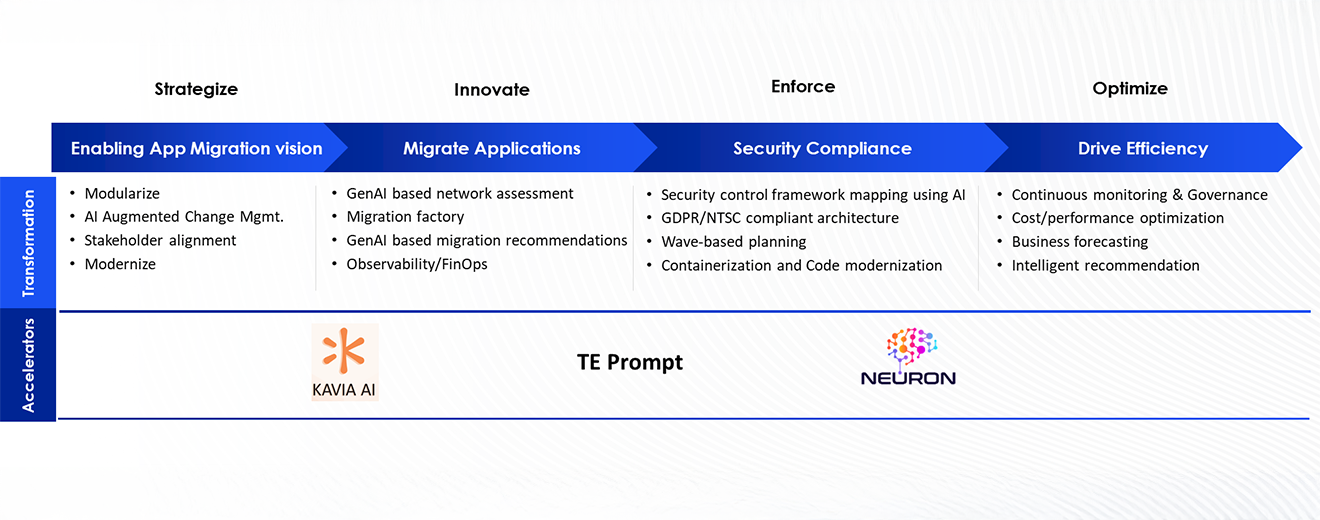

Modernize Legacy Stack into a Scalable, Future-Ready Tech Stack
As telcos evolve towards cloud-native, AI-driven, and software-defined operations, modernizing legacy systems has become a strategic imperative. Aging infrastructure, rising costs, and vendor-driven changes are accelerating the shift towards open, flexible, and future-proof technology stacks. We help organizations modernize their legacy infrastructure and applications to unlock performance, scalability, and cost efficiency.
Our Legacy Network Modernization Services enable a seamless transition from outdated systems to modern, cloud-native, and open architectures. We deliver end-to-end modernization services that reduce complexity, eliminate vendor lock-in and accelerate digital transformation. With proven expertise in tech-stack modernization, multi-cloud environments, and automation-led transformation, we empower businesses to stay ahead in an increasingly dynamic digital landscape.
Site Reliability Engineering
Business Challenge
Telecom operators and enterprises are under pressure to modernize aging infrastructure while reducing operational costs and accelerating service delivery. Legacy OSS systems, manual network operations and fragmented cloud environments limit agility and innovation. Addressing these challenges demands integrated solutions that enable modernization, automation and resilient operations across hybrid environments.


Here’s how we help
Cloud Native Migration Blueprint
- Discovery & assessment
- Migration strategy development & solution blueprint design
- Evaluation and audit of readiness & required KPIs for cloud migration
- Cloud suitability analysis: Assessment of workloads for public, private or hybrid cloud models
- Business Assurance through Regulatory Compliance
Business Assurance through Regulatory Compliance
- Create detailed run-books, timelines and risk mitigation strategies
- Implement tools and automation for seamless data & application migration
- Apply data protection mechanisms, encryption and access controls
- Migration of applications, databases and infrastructure to target cloud environment
Gen-AI driven Assessment
- Automated discovery & inventory analysis
- Code & configuration understanding
- Business process mapping
- Modernization readiness scorecard
Service Framework

Use Cases
Cloud Migration
- Application modernization
- On-premise to hyperscaler migration
- Modernization of on-premises systems to Kubernetes-based platforms
OSS Transformation
- Greenfield deployment & workload migration
- OSS modernization
- AI/Data sovereignty
CX Transformation
- CRM modernization
- Digital channel upgrades
Why Tata Elxsi?
- End-to-End Capability: From assessment and re-architecture to migration, integration, managed services, ISV tooling partnerships, cloud native blueprint and proven transformation frameworks
- Hybrid & Multi-Cloud Enablement: Seamless modernization leveraging partnerships with AWS, Azure, Google Cloud, and IBM Hybrid Mesh
- IP-Led Accelerators: Proprietary tools, automation frameworks, and GenAI-enabled migration accelerators to reduce cost and time-to-market
- Security & Compliance at Core: Built-in adherence to global standards (ISO, GDPR, HIPAA, etc.) during transformation
- Sustainability by Design: Optimized architectures that cut carbon footprint and operational overhead
Information Hub
-
How does the AI Telco Fabric abstract heterogeneous legacy systems?
The AI Telco Fabric employs a semantic data model to normalize representations of legacy assets and configurations. This abstraction enables uniform management via standardized APIs, allowing orchestration and control layers to interact consistently across diverse and heterogeneous environments.
-
What approach is used for workload placement across hybrid infrastructures?
Workload placement is governed by reinforcement learning algorithms that evaluate multiple parameters including latency, cost, and compliance constraints. These models continuously adapt placement decisions based on evolving telemetry and operational metrics to optimize resource utilization and service performance.
-
How does the system maintain operational continuity during transformation?
The system leverages predictive AI models to proactively identify transformation risks such as capacity saturation or performance degradation. In the event of threshold violations, rollback orchestration mechanisms restore the system to the last known stable state, ensuring uninterrupted service continuity.
-
How is data consistency managed across legacy and cloud-native domains?
Data consistency is achieved through schema alignment and timestamp synchronization across all telemetry sources. This unified data model supports coherent analytics, assurance, and control logic, enabling reliable decision-making across hybrid environments.
-
What architectural state is targeted post-modernization?
The target architecture is a cloud-native control fabric built on microservices, declarative APIs, and policy-driven governance. This design facilitates continuous deployment, fine-grained automation, and eliminates dependency on legacy middleware, enabling scalable and agile network operations.










